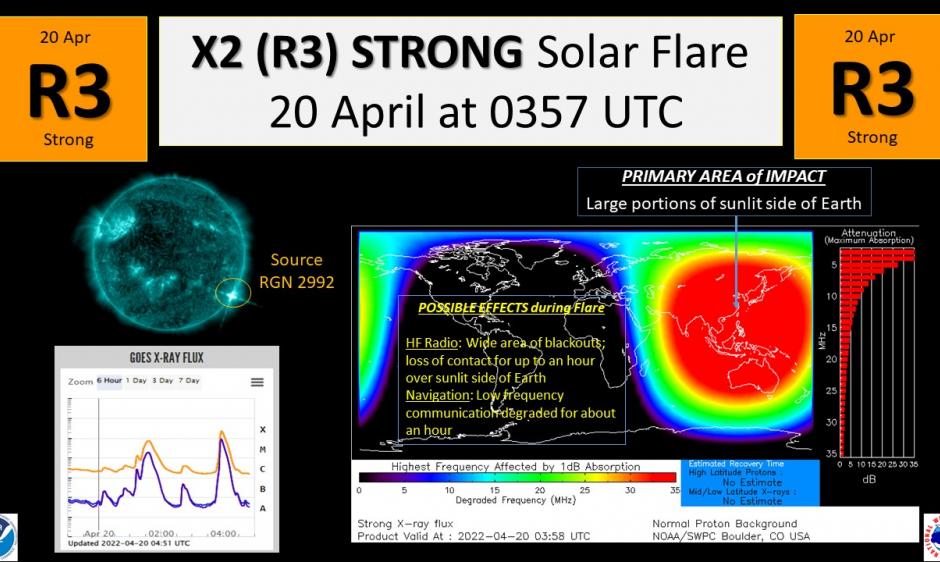
An X2.2 flare (R3-Strong Radio Blackout) occurred at 11:57pm EDT on 19 April, 2022 (20/0357 UTC). The flare erupted from a region just beyond the southwest limb of the Sun – likely former Region 2992. The strong flare was associated with multiple bursts on specific radio frequencies to include a burst of 509 solar flux units on 2695 MHz. Additionally, a Type II radio sweep was detected by the USAF Radio Solar Telescope Network (RSTN), with an estimated velocity of 1630 km/s. This radio signature is often indicative of a potential coronal mass ejection (CME). SWPC forecasters are waiting for available coronagraph imagery from the NASA/SOHO LASCO instrument to confirm if a CME took place, and if so, analyze accordingly. However, as the source region of the flare was beyond the southwest limb, initial analysis suggests any CME is unlikely to have an Earth-directed component.